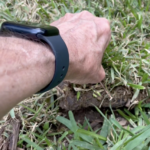We have been getting many “What’s wrong with my lawn this year?” questions this spring.
First, you need to know that we had an unusually harsh winter in North Texas. Our temperatures plummeted to 8 degrees in December, and a few weeks later, we had a significant ice storm. When you combine that extreme winter weather with our cooler-than-normal April, we end up with area lawns that are slow to come out of dormancy (This year, we are roughly 4-weeks behind our average green-up period in North Texas.)
So, how are North Texas lawns doing overall?
The biggest issue is our St. Augustine lawns. In fact, after forty years in North Texas, this is the most damage in St. Augustine that I’ve seen in a couple of decades! Remember that St. Augustine is a tropical plant that doesn’t like wide temperature swings. And our weather the past five or six months has been tough on it.
My rule of thumb is that if your lawn looked good last July and August, it should look good again this year.
The good news is that these lawns have started to green up in the past couple of weeks. The majority of the ones we see that are not returning result from poor watering during last year’s drought (they didn’t get enough water.) Improper watering leads to stress in the roots, which causes root damage. Weak roots leave you with a plant that can’t handle the stress and strain of a harsh winter followed by a cool spring.
So, how can you tell if your lawn is coming back?
You should be seeing green sprouts and runners spread evenly across the area. St. Augustine is an aggressive plant, so it should bounce back over time if there is some currently in the lawn. If you are not seeing anything green in a large patch, more than likely, this area is too far gone and will need to be re-sodded.
Here are a few tips on how to help your lawn thrive as we head into middle to late spring.
DO NOT scalp your lawn with a mower this spring, and rake the old, dead grass to try and jump-start new growth. Cutting the lawn too low and raking damage the runners and will delay your recovery.
DO apply a special root-stimulating fertilizer to your lawn. We use 18-46-0 diammonium phosphate for our lawn health plan customer’s lawns. We do this because when the root system is damaged, the last thing we want is to stress the grass by applying high-nitrogen fertilizer to force top growth. The lawn needs to recover slowly to return to a healthy root system.
And last but certainly not least, the most important thing you can do is ensure you water your lawn correctly each season. How much you water in the summer will affect how well your yard does in winter and spring.
I cannot stress this enough. If you want a healthy lawn, be vigilant with your watering. Download our free seasonal watering guide.
If you want a healthier lawn without the hassle of maintaining it yourself, call 972-495-6990 or contact us for more information about our affordable lawn health plans.



